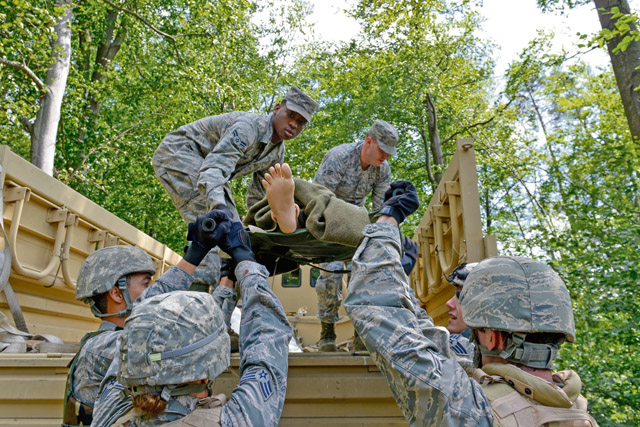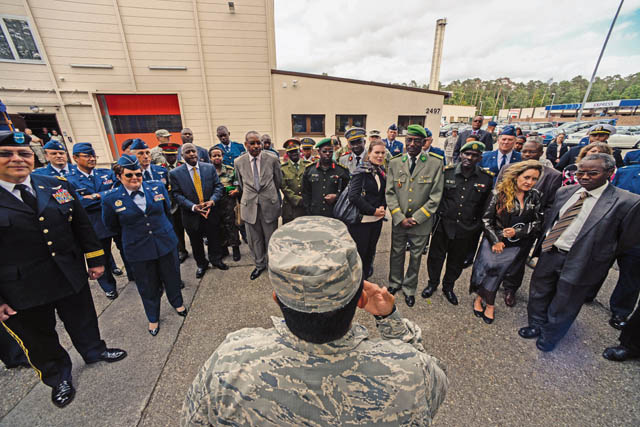
Saving lives is not only the responsibility of medical responders within the KMC, all Airmen and Soldiers must stay current on training to respond in times of need.
More than 60 NATO officers from around the globe attended a medical response demonstration Aug. 25 on Ramstein.
In an effort to advise partnered nations’ top surgeon generals, approximately 30 Airmen and Soldiers gathered to perform the three-step response procedures that take place during casualty and medical evacuations.
Members moved through scenarios that began with caring for a simulated injured service member on scene to transporting them to “role two” where a forward surgical team treated them for life threatening injuries, and finally moving them to “role three” onto an aircraft for further transport.
Seeing this demonstration was very beneficial to strengthening NATO bonds, according to Ugandan army Lt. Col. Joseph Asea, Bombo Military Hospital orthopedic surgeon.
“We all have different capabilities, and the way we do things may not be the same,” Asea said. “When we are working together, it is good to harmonize our processes while handling casualties so that everything is standardized. One method may not be acceptable to the other, but if we synchronize them we can do it in a similar way and strengthen our partnership.”
According to U.S. Air Force Lt. Col. Erwin Gines, 86th Medical Group chief nurse, the U.S. military is equipped with a unique skillset compared to other countries. Self-aid and buddy care training is taught regardless of the job assigned to the service member.
U.S. Air Force and Army personnel are ready to respond, increasing the survivability rate when a medic is not around.
“That is something that saves the most lives,” Gines said. “You can brief someone with a PowerPoint presentation all day, but it is much more valuable to see these unique skills in person.”
Not only do different NATO countries use a variety of methods to treat patients, but they also use different aircraft to transport them.
“A lot of the countries have helicopters that they use for patient movement,” said Maj. Kimberly Polston, U.S. Air Forces in Europe and Air Forces Africa Surgeon General’s office international health specialist. “We are trying to help our partners who are deploying in support of peacekeeping operations in Africa. They are going into other countries, moving both patients and cargo, and we are right alongside them to help with training.”
Training like this strengthens the NATO alliance, maintains readiness and ensures all members of NATO can save a life if necessary.



